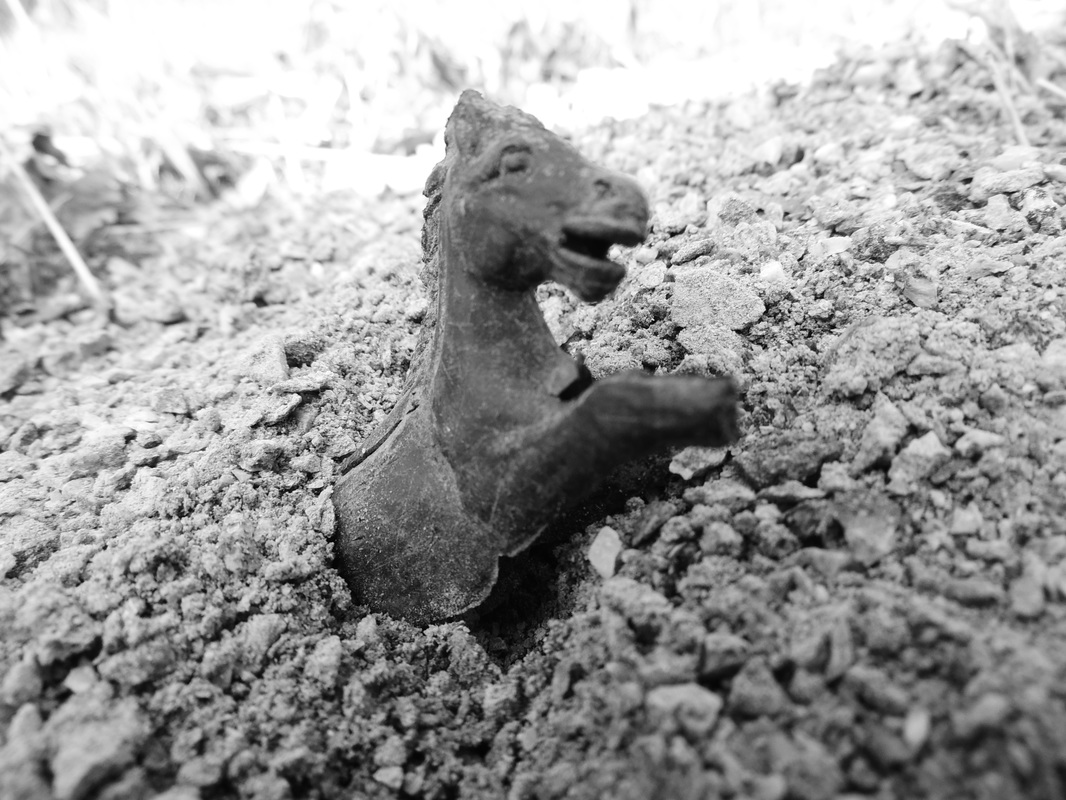|
The Breadcrumbs widget will appear here on the published site.
Burial of a Dark Charger
Looking from one end of a story to another is enlightening in most circumstances. Often the surprises on tap happen out of the blue ... or take a piece of forever to come around.
The bright, leafy day of October 11, 1827 came on, the wind like a music in the air and the foliage near perfect for a stage backdrop or a classic painting, the sort most of us know and appreciate. At this moment of introduction, nine year old George Secord of Alton, New Hampshire, was hurting, at pain's awareness, at self discovery. The toothache in his head was severe, a different kind of gnawing, wholly persistent, steady as drum rolls, as urgent, but the stage was set for monumental relief ... a string hung across the room in mid air, as if floating without support, until the ends were sought, one end tied to the latch of an open door and the other end, the manipulative end, the end of reason, mounted about a tooth in the mouth of young George. His mother, about to scream at him her discord, observed her youngest, George, nod to his brother Moses, who promptly slammed the door with a mighty shove from a boy two years older than this out-patient of sorts. The impact of door on jamb echoed throughout the house, the mother nearly fainted, and youngest Secord often said, from that day, he never felt so much pain until a minié ball at the Civil War battle of Chancellorsville slammed into his jaw, into the same area where that ugly tooth once sat. "History," he announced on certain holidays much later in life, "has its small repetitions." Folks said he was prone at that moment to place his open hand over the area of both wounds, a salutation to memory and recovery, most likely. As most boys of Alton and nearby towns did in those days, he grew through his early adventures on the lakes, in farm work, the odd jobs that small opportunities offer, until he was older, grown up, a responsible adult who went into several businesses himself, making them good, making them do, making them his own enterprises. Prosper he did, made a good name for himself, a businessman on the rise, who also stood his ground on political issues and political duties. Chief among them, and most fervent, was the issue of slavery and emancipation. "Man," he stated on many occasions, "should be born free of harsh weights such as slavery or any weird domination. Even without ropes or manacles, such treatment is inhuman, is wrong from the start." Free he was with such statements of belief , near singing them at times, phrases that rang with his feelings: "I care little for kings and masters, for lords and dukes and royalty that set store above the common man of any belief, strain, color or origin other than the occasion of their arrival among us as men of the world, sitting about us, serving us, as we should serve in total concert." As called for by his spirits, he often stood against the chiding such views invoked, found belittlement, discarded it as mundane and unworthy of his energy. When the Great War broke out between the states of his nation, he stood firm once again, this time more than halfway through his life. At age 44 at Alton in 1862 he enlisted in the 12th NH Volunteer Infantry. Off to a just war he went, but on his own horse, which he called Tom the Charger, a dark steed of noble appearance. His most serious wound came about a year later, on May 3, 1863 at the Battle of Chancellorsville. He came home to New Hampshire in 1864, a hero after his hospitalization and discharge from the Army of the Blue. On that return he was mounted on the same horse on which he had left town, Tom the Charger, the horse he rode through his battles of the war. Departure and return, readily visible to the people of Alton, were quite different. It was dual pain that day of battle's injury, as his brother Moses was killed by a sniper's shot fired long range into his head. Pain, George was ever to realize afterwards, comes in odd formation, odd direction, odd circumstance, and is never taken back; never taken back and, only if you're lucky, delivers a later and softer memory, proving to be an easement on the soul, an emotional temperance many warriors seek as balm and embrocation. You can feel it, but may never name it, he'd often agree, and his comrades would, too. There were times he thought it was like seeing the mysterious lady in a blue-ish dress who mysteriously and ghost-like appears while positively silken, mellifluous, on various evenings at the cemetery in Alton. Some citizens say she only picks on certain subjects to brighten or sadden their lives. Nevertheless she is nameless, blurry, obviously lonely, haunting, getting her fair share of attention. Nobody knows who she is, who of her own she's looking for if she is, the kind of mystery never solved, perpetual, built on, even when levity ascends a discussion about her sighting in the dusky roadways of the cemetery, or in between mounds and mausoleums scattered in odd symmetry: "Don't make it easy for ghosts to gather, or provide convention allowances for them. They may frighten children, yet make us ponder and wonder of their bracing." After his wounding and hospitalization, Maj. George Secord, it was said, performed light army duty until his discharge in May 1864, as a Lt. Colonel, to which he had been promoted "for his brave services" and may have assumed a title one level up as a "Colonel." This subsequent act may have been accorded him by military recognition and acceptance. For the curious, biographical notes clearly say he is buried in Riverside Cemetery in Alton, NH on Route 11. That he enlisted at age 44 at Alton in 1862 in the 12th NH Volunteer Infantry, was wounded 5/3/63 at the Battle of Chancellorsville, and came home riding on his horse, Tom the Charger, in 1864 after discharge from military service. An historical check on battle records, for infusion into this account and a recognition of deeds, say that despite its losses, the 12th regiment held fast to contested grounds, actions that served to delay Rebel advances for a number of hours. The regiment's personnel had been issued about 60 rounds of ammunition, quickly expended and more cartridges were extracted from dead or wounded soldiers. In the progression of the battle, Rebel units were trying to circle the 12th, to cut it off from allied forces. Many of its officers were dead and the 12th retreated. More Confederate forces joined in quickly closing about the diminished 12th, and survivors rushed to the protection provided by a new Union line of resistance built near the Chancellor House. When they re-gathered in a rear position, the 12th, for all intents and purposes, was out of the battle of Chancellorsville. The battle was a highly costly engagement for the 12th, for 41 men were killed, 200 or more wounded, over 60 taken as prisoners or reported as missing in action. Those counts are applied to a complement of 560 or so men, the highest losses sustained by a Union force at Chancellorsville. The regiment also suffered heavy casualties two months later at Gettysburg and again at Cold Harbor in June of 1864. But George Secord was on his way home, mounted on the faithful steed that carried him off to war, through that war, and finally brought him back to Alton. After the end of the war, Secord enjoyed a successful career, but the great charger Tom succumbed to age and miseries. His master asked the town fathers for permission to bury "this other veteran of the Great War" in the town cemetery. There was, of course, concerns both ways for man and horse, but the town council, realizing what might happen in the future with loyal and dependent animals, pets, etc., denied the request but allowed Secord to bury Tom the Charger right outside the cemetery fence. For sure, there was little looking "down the road" by the council and nobody knows if Secord saw the future. But, as mortality has its ends, as towns and communities grow and face deaths and burials of its folks, the cemetery in Alton just mushroomed in its slow pace, and spread its land claims beyond the old fence line. In fact, in more than a hundred years, much father past the original fence line. Today, in Alton, both Colonel George Secord and Tom the Charger lie within the bounds of the cemetery, that gallant horse, who brought his rider home from the Great War, practically at midpoint of the cemetery. It is not beyond reason that horse and rider may on occasion accompany the Lady in the Blue-ish dress on her nightly rounds, silence their gain, a ghostly appearance as well.
#Unreal #CivilWar #DarkCharger #Battle #Hauntings
Visit our shop and subscribe. Sponsor us. Submit and become a contributor. Like us on Facebook and follow us on Twitter.
CommentsComments are closed.
|










